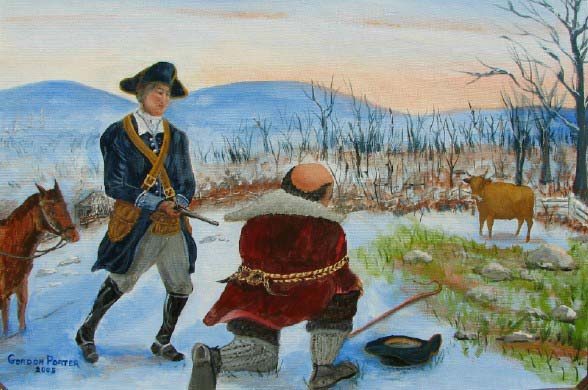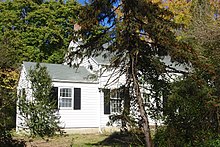Spy John Honeyman

Spy John Honeyman
James knows a secret about a captured spy named John Honeyman, but he can’t tell anyone—not even Sarah. Using the element of surprise, General Washington gets two much-needed victories at Trenton and Princeton.
 John Honeyman (1729—August 18, 1822) was an Americanspy and British informant for George Washington, primarily responsible for spreading disinformation and gathering the intelligence crucial to Washington’s victory in the Battle of Trenton.
John Honeyman (1729—August 18, 1822) was an Americanspy and British informant for George Washington, primarily responsible for spreading disinformation and gathering the intelligence crucial to Washington’s victory in the Battle of Trenton.
Born in Ireland, purportedly in Armagh, Honeyman was of Scottish descent. The son of a poor farmer, he received little formal education but was nevertheless literate and learned several trades, including weaving. He worked as a farmer until the age of 29 and then entered the British Army to fight in the French and Indian War in 1758.
He sailed to Canada aboard the frigate Boyne on which Colonel James Wolfe was also embarked. One day during the Atlantic Ocean crossing, Honeyman was on watch on the deck when Wolfe, who was about to descend a stairway, tripped and would have surely fallen if he had not been caught by Honeyman. Wolfe showed his gratitude by taking down Honeyman’s name and promising to look out for the young private.
Upon landing off the Saint Lawrence River, Honeyman’s unit was almost immediately put into action against the French during the Siege of Louisbourg which ended after 48 days on July 26, 1758. Wolfe, who served under General Jeffery Amherst, was shortly promoted to General. He remembered the young private who saved him aboard the Boyne and made him his bodyguard, with orders to remain with him at all times.
The success of the siege cleared the way for the British expedition led by General Wolfe to take New France at Quebec City the following summer and which culminated in the Battle of the Plains of Abraham on September 13, 1759. While it ended with a British victory, Wolfe was fatally shot and Honeyman was among those who carried the General down the heights to his shelter, where he died. Some people believe that one of the three men surrounding Wolfe in the painting La Morte de Wolfe by Benjamim West at the McCord Museum in Montreal is John Honeyman.
After the war, Honeyman was given an honorable discharge from the army and he settled in Pennsylvania, carrying with him his discharge papers as well as a letter from General Wolfe requesting his services as his bodyguard. He took up his trade as a butcher and weaver and he married the former Mary Henry, an Irish girl from Coleraine at the First Presbyterian Church in Philadelphia on September 22, 1764.
 John Honeyman house, Griggstown
John Honeyman house, Griggstown
When Washington’s Continental Army was retreating across New Jersey in 1776, Washington wanted to “get some person in to Trenton” as an agent. He called upon Honeyman for a meeting at Fort Lee, New Jersey in November and there, Honeyman agreed that he would act the part of a spy for the American cause in that part of New Jersey where he was most familiar. Washington told Honeyman to use the cover of a Tory. The fact that he served under Wolfe, as proven by his discharge papers as well as Wolfe’s letter requesting his services as his bodyguard, guaranteed his acceptance by the enemy garrison in Trenton.
Posing as a Tory, Honeyman, continuing his trade as a butcher and weaver, commenced his trade with the British. He was instructed to continue trading as much as possible behind the American lines in Griggstown and, if necessary, to flee to Trenton on the pretext of the danger posed to his family due to his double-dealing. The deceptive plan was so believable that a mob of angry American patriots raided Honeyman’s house in Griggstown. Fortunately, his family were saved from certain harm by a signed letter from Washington guaranteeing its safety, but nevertheless calling Honeyman “a notorious Tory.”
His credibility as a Tory now well-established, he moved to Trenton where his trade enabled him to move freely within the town and gather intelligence about the garrison. Having amassed enough information, he arranged to be captured by the Continental forces, who had been ordered to watch for him and bring him straight to Washington unharmed. To learn more about John Honeman go to the link below

